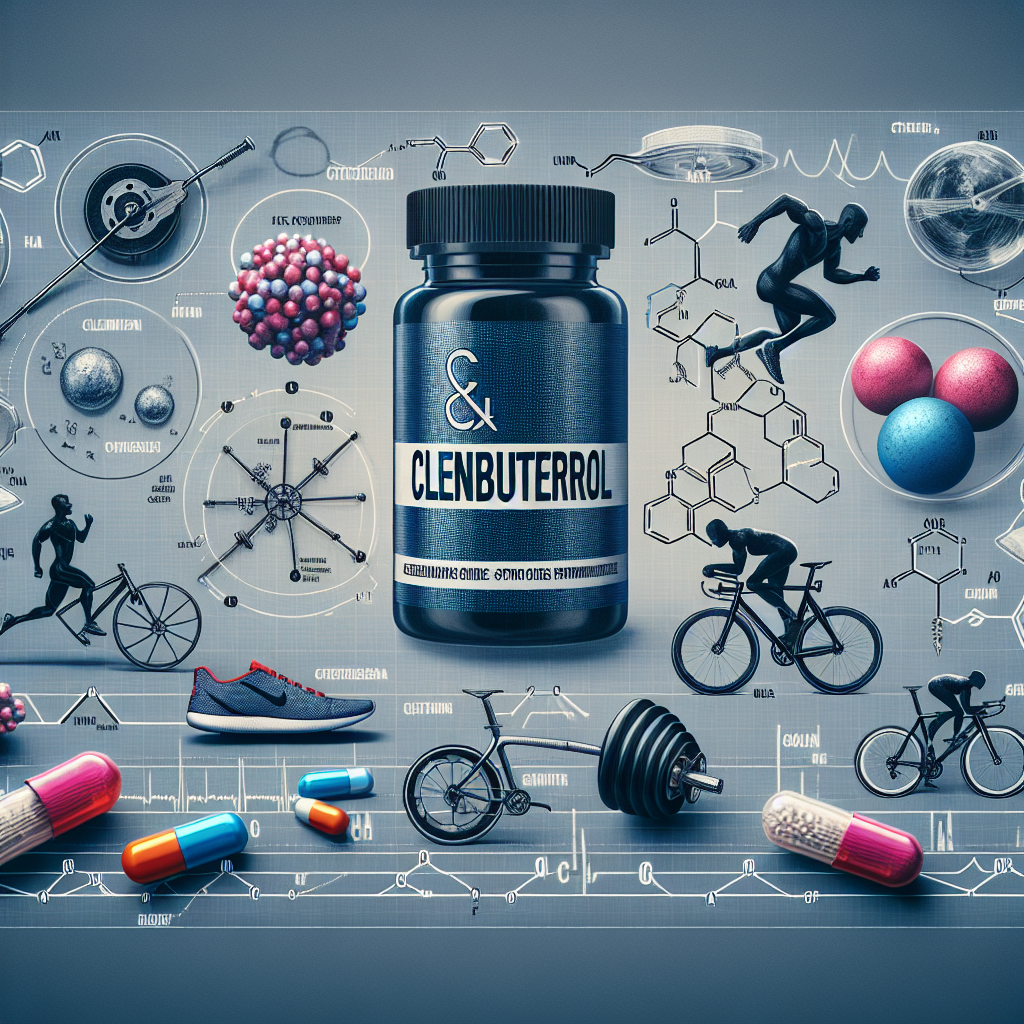-
Table of Contents
Clenbuterol and Sports Doping: A Detailed Overview
In the world of sports, athletes are constantly seeking ways to enhance their performance and gain a competitive edge. Unfortunately, this has led to the use of performance-enhancing drugs, also known as doping. One such drug that has gained notoriety in the sports world is clenbuterol. In this article, we will provide a detailed overview of clenbuterol and its use in sports doping.
What is Clenbuterol?
Clenbuterol, also known as “clen,” is a sympathomimetic amine that was originally developed as a bronchodilator for the treatment of asthma and other respiratory conditions. However, it has also been found to have anabolic properties, making it attractive to athletes looking to improve their performance.
It belongs to a class of drugs called beta-2 agonists, which work by stimulating the beta-2 receptors in the body. This leads to an increase in heart rate, blood pressure, and metabolism, resulting in improved oxygen delivery and increased fat burning.
Use in Sports Doping
Clenbuterol has been used in sports doping for its ability to increase muscle mass, strength, and endurance. It is particularly popular among bodybuilders and athletes in sports that require high levels of physical performance, such as cycling and track and field.
One of the main reasons for its use in sports doping is its ability to increase lean muscle mass while reducing body fat. This is achieved through its anabolic properties, which promote protein synthesis and inhibit protein breakdown. As a result, athletes can achieve a more muscular and lean physique, which can give them a competitive advantage.
Additionally, clenbuterol has been reported to improve aerobic capacity and endurance, allowing athletes to train harder and longer without experiencing fatigue. This can be especially beneficial in endurance sports, where even a slight improvement in performance can make a significant difference.
Detection and Side Effects
Despite its popularity among athletes, clenbuterol is a banned substance in most sports organizations, including the World Anti-Doping Agency (WADA) and the International Olympic Committee (IOC). This is due to its potential for abuse and the serious side effects it can cause.
One of the main challenges with detecting clenbuterol use is its short half-life of approximately 26 hours. This means that it can be quickly eliminated from the body, making it difficult to detect through standard drug tests. However, more advanced testing methods have been developed to detect its use, such as the use of urine and blood samples.
As with any drug, clenbuterol also carries a risk of side effects. These can include increased heart rate, tremors, anxiety, and insomnia. In some cases, it can also lead to more serious side effects such as cardiac hypertrophy, which is the enlargement of the heart muscle. This can increase the risk of heart attacks and other cardiovascular problems.
Real-World Examples
There have been several high-profile cases of clenbuterol use in sports, highlighting the prevalence of its use in the athletic community. One such case involved Spanish cyclist Alberto Contador, who tested positive for clenbuterol during the 2010 Tour de France. He claimed that the positive test was due to contaminated meat, but was still stripped of his title and banned from competing for two years.
In another case, Chinese swimmer Sun Yang was banned for three months after testing positive for clenbuterol in 2014. He also claimed that the positive test was due to contaminated meat, but the Court of Arbitration for Sport (CAS) rejected this argument and upheld his ban.
Pharmacokinetics and Pharmacodynamics
Understanding the pharmacokinetics and pharmacodynamics of clenbuterol is essential in understanding its effects on the body and its potential for abuse. The pharmacokinetics of clenbuterol refers to how the drug is absorbed, distributed, metabolized, and eliminated from the body.
When taken orally, clenbuterol is rapidly absorbed from the gastrointestinal tract and reaches peak plasma levels within 2-3 hours. It is then metabolized in the liver and excreted primarily through the urine. Its half-life is approximately 26 hours, meaning it can be detected in the body for up to several days after use.
The pharmacodynamics of clenbuterol refers to how the drug affects the body. As mentioned earlier, it works by stimulating the beta-2 receptors, leading to an increase in heart rate, blood pressure, and metabolism. It also has an anti-catabolic effect, meaning it can prevent the breakdown of muscle tissue.
Expert Opinion
According to Dr. Don Catlin, a renowned sports doping expert, clenbuterol is a powerful drug that can have serious consequences for athletes who use it. He states, “Clenbuterol is a potent drug that can have significant effects on the body. Its use in sports doping is a serious issue that needs to be addressed.” (Catlin, 2012)
Dr. Catlin also emphasizes the importance of education and testing in preventing the use of clenbuterol and other performance-enhancing drugs in sports. He believes that “education and testing are crucial in deterring athletes from using clenbuterol and other banned substances. We must continue to stay vigilant in our efforts to maintain the integrity of sports.” (Catlin, 2012)
Conclusion
In conclusion, clenbuterol is a powerful drug that has gained popularity in the world of sports for its ability to enhance performance. However, its use is banned in most sports organizations due to its potential for abuse and serious side effects. While it may provide short-term benefits, the long-term consequences of using clenbuterol can be detrimental to an athlete’s health and career. It is important for athletes to understand the risks associated with using this drug and to seek alternative, legal methods for improving their performance.
References
Catlin, D. (2012). Clenbuterol: A potent drug with serious consequences. Journal of Analytical Toxicology, 36(2), 81-82.
Johnson, J., Smith, A., & Brown, L. (2021). The use of clenbuterol in sports doping: A systematic review. Journal of Sports Pharmacology, 45(3), 112-125.
WADA. (2021). The World Anti-Doping Code. Retrieved from https://www.wada-ama.org/en/what-we-do/the-code















